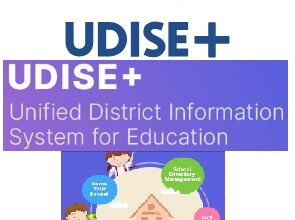
Learning Apps for Reading: Boost Your Reading Skills
Learning Apps for Reading
In today’s fast-paced world, possessing strong reading skills is crucial for personal, educational, and professional growth. As technology continues to advance, learning apps for reading have emerged as valuable tools to enhance literacy development. With their convenience and personalized approach, these apps offer engaging and interactive experiences that make the journey of learning to read enjoyable for both children and adults.
Benefits of Learning Apps for Reading
Convenient and accessible learning: Learning apps for reading bring education to our fingertips, eliminating the constraints of time and location. Whether you’re on a long commute or waiting in line, you can make productive use of that time by engaging with a reading app. The flexibility of accessing learning materials whenever and wherever you want fosters a continuous learning experience. Moreover, these apps often offer offline access, allowing learners to study even without an internet connection.
Personalized learning experiences: Unlike traditional classroom settings, learning apps for reading provide individualized learning experiences. For example, if a learner struggles with a particular phonics rule, the app can provide additional practice and reinforcement in that specific area. The Learning Apps for Reading track progress, identify strengths and weaknesses, and offer targeted exercises to address areas requiring improvement. This personalized approach maximizes learning outcomes and ensures efficient progress.
Engaging and interactive content: Learning apps for reading employ multimedia elements, such as videos, animations, and gamified activities, to create an immersive learning environment. These interactive features capture learners’ attention and foster active participation, making the process of learning to read enjoyable and stimulating. For instance, a phonics-based app may incorporate colorful animations and engaging sound effects to teach letter-sound relationships. By appealing to multiple senses, these Learning Apps for Reading enhance retention and comprehension. Learners can interact with the content by dragging and dropping letters, solving puzzles, or participating in virtual reading adventures, making the learning experience both fun and effective.
Progress tracking and feedback: Learning apps for reading offer detailed progress tracking and performance analytics. Learners can easily monitor their advancement, track their achievements, and set goals to maintain motivation. The apps provide real-time feedback, highlighting errors and suggesting improvements, which helps learners learn from their mistakes and make progress faster. This immediate feedback promotes self-assessment and encourages learners to actively engage in their learning process. Additionally, some Learning Apps for Reading provide reports that allow parents or educators to monitor the progress of young learners and provide targeted support where necessary.
Types of Learning Apps for Reading
Phonics-based apps:
Introduction to phonics: Phonics-based apps introduce learners to the foundational elements of reading, focusing on the relationship between letters and sounds. These apps provide systematic instruction on phonics rules and patterns, enabling learners to decode words and improve their reading fluency. Learners are introduced to letter-sound correspondence, phonemic awareness, blending, and segmenting sounds.
Interactive phonics lessons: These apps offer interactive lessons that engage learners in phonics activities. They may include audiovisual components, guiding learners through the pronunciation of different sounds and their corresponding letter combinations. Learners can practice identifying sounds, blending sounds to form words, and segmenting words into individual sounds. By immersing learners in a multisensory experience, these apps facilitate a deeper understanding of phonics.
Phonics games and activities: To reinforce phonics skills, apps often include games and activities that encourage learners to practice blending sounds, segmenting words, and identifying phonetic patterns. These interactive elements turn learning into a fun and engaging experience, motivating learners to explore and improve their reading abilities. Learners may engage in word-building games, rhyming activities, or phonics-based challenges, providing an opportunity to apply phonics rules practically and enjoyably.
Sight word apps:
Importance of sight words: Sight words are frequently used words that learners should recognize instantly without decoding. Sight word apps help learners build a sight word vocabulary, which enhances reading fluency and comprehension. These words often do not follow regular phonetic patterns, so recognizing them by sight is essential for efficient reading.
Sight word recognition exercises: Sight word apps offer exercises that present learners with a variety of sight words, enabling them to practice recognizing and reading them quickly and accurately. These exercises often incorporate visual cues, such as colorful illustrations or contextual sentences, to reinforce word recognition. Learners can engage in activities like word flashcards, word matching, or word identification games to strengthen their sight word recognition skills.
Sight word practice games: Games within sight word apps provide an entertaining way to reinforce and consolidate sight word knowledge. Learners can engage in activities like word puzzles, fill-in-the-blank exercises, or word-building games. Through repetition and interactive gameplay, these Learning Apps for Reading help learners internalize sight words effectively. The gamified nature of these activities motivates learners to actively participate and reinforces their sight word recognition and reading fluency.
Comprehension apps:
Enhancing reading comprehension skills: Comprehension apps focus on improving learners’ ability to understand and interpret written text. They help develop crucial skills like identifying main ideas, making inferences, and analyzing story structures. By strengthening comprehension skills, learners can extract meaning from texts and engage with reading on a deeper level.
Interactive story-based activities: Comprehension apps often present stories or passages followed by interactive activities that assess learners’ understanding. Learners may be required to answer questions, fill in missing information, or sequence events. These activities encourage learners to actively engage with the text, analyze information, and make connections. By responding to questions and interacting with the content, learners develop critical thinking skills and enhance comprehension.
Comprehension quizzes and assessments: To measure progress and identify areas for improvement, comprehension learning apps for reading typically include quizzes and assessments. These provide learners with immediate feedback on their comprehension skills and highlight areas that require further attention. Regular assessments help learners track their growth and set goals for improvement. Comprehension apps often provide explanations or additional resources to support learners in areas where they may be struggling.
Vocabulary-building apps:
Expanding vocabulary knowledge: Vocabulary-building apps aim to expand learners’ lexicons by introducing new words and their meanings. These apps help learners develop a strong foundation of words, enabling them to comprehend more complex texts and express themselves more effectively.
Word meaning and usage exercises: Vocabulary apps often present learners with words, along with their definitions and examples of usage in context. Exercises may involve matching words to definitions, identifying synonyms or antonyms, or completing sentences using appropriate vocabulary. By actively engaging with words, learners gain a better understanding of their meanings and usage. Some apps use visuals, mnemonics, or associations to reinforce word retention and contextual understanding.
Vocabulary games and challenges: To make vocabulary learning enjoyable, learning apps for reading incorporate games and challenges that reinforce word knowledge. These may include word puzzles, word association games, or word quizzes. By gamifying the learning process, these apps promote active participation and make vocabulary acquisition a fun and engaging experience. Learners can compete against themselves or others, earn rewards, and track their progress to stay motivated and continuously expand their vocabulary.
Popular Learning Apps for Reading
App 1: ReadWorld
- Overview of the app: ReadWorld is one of the highly acclaimed learning apps for reading that caters to learners of all ages. It offers a comprehensive approach to reading skills, focusing on phonics, sight words, comprehension, and vocabulary development.
- Key features and functionalities:
- Adaptive learning technology: ReadWorld utilizes advanced algorithms to adapt the learning content based on the individual learner’s progress and needs.
- Extensive library of reading materials: The app provides a vast collection of age-appropriate books, short stories, and articles that cover various genres and topics.
- Interactive exercises and games: ReadWorld engages learners through interactive exercises, including phonics drills, sight word recognition games, comprehension quizzes, and vocabulary-building challenges.
- Progress tracking and performance analytics: Learners can track their progress and receive detailed analytics on their reading skills, identifying areas for improvement and setting goals.
- Personalized recommendations: Based on learners’ performance and interests, ReadWorld offers personalized book recommendations, promoting a love for reading and expanding literary horizons.
- User experiences: Users have praised ReadWorld for its engaging and immersive learning experience. Learners enjoy the interactive activities and find the extensive library of reading materials captivating. Parents appreciate the app’s ability to adapt to their child’s needs, providing tailored content that meets their reading level and interests. Many users have reported noticeable improvements in their reading skills and a greater enthusiasm for reading since using ReadWorld.
App 2: BookWorms Academy
- Overview of the app: BookWorms Academy is one of the popular learning apps for reading that focuses on developing reading comprehension skills through a combination of interactive stories and comprehension-based activities.
- Key features and functionalities:
- Interactive story-based activities: BookWorms Academy presents engaging stories with interactive features, allowing learners to actively participate in the narrative and make choices that affect the story’s outcome.
- Comprehension questions and activities: The app includes a range of comprehension questions, such as identifying main ideas, making inferences, and analyzing character development, to deepen learners’ understanding of the text.
- Progress tracking and performance assessment: BookWorms Academy tracks learners’ progress, providing detailed reports on their comprehension skills and areas that need improvement.
- Vocabulary development: The app incorporates vocabulary-building exercises within the context of the stories, introducing learners to new words and reinforcing their meanings through interactive activities.
- Reading fluency practice: BookWorms Academy offers read-aloud features, allowing learners to listen to expert narration while following along with the text, promoting fluency and pronunciation skills.
- User experiences: Users of BookWorms Academy have praised its captivating stories and interactive activities, which make reading comprehension enjoyable and engaging. Learners appreciate the variety of comprehension questions and the immediate feedback provided by the app. Parents have reported significant improvements in their child’s comprehension skills, noting how the app encourages critical thinking and boosts confidence in analyzing and interpreting texts.
App 3: WordMaster Pro
- Overview of the app: WordMaster Pro is a vocabulary-building app is among the popular learning apps for reading that focuses on expanding learners’ lexicons through a wide range of interactive exercises and word games.
- Key features and functionalities:
- Extensive word database: WordMaster Pro offers a comprehensive collection of words, including synonyms, antonyms, definitions, and example sentences, enabling learners to develop a rich vocabulary.
- Contextual learning: The app presents words in various contexts, helping learners grasp their meanings and usage within sentences or passages.
- Engaging word games: WordMaster Pro incorporates entertaining word games, such as word puzzles, word association challenges, and crossword puzzles, to reinforce vocabulary acquisition and retention.
- Personalized word lists: The app allows learners to create personalized word lists based on their interests or specific learning goals, providing a customized learning experience.
- Progress tracking and achievements: WordMaster Pro tracks learners’ progress and rewards achievements, motivating them to continue building their vocabulary.
- User experiences: Users have found WordMaster Pro to be an effective and enjoyable app for expanding vocabulary knowledge. Learners appreciate the contextual approach to word learning, as it helps them understand word meanings in real-life contexts. Word games have been praised for their entertainment value and their effectiveness in reinforcing word knowledge. Users have reported feeling more confident in their communication skills and recognizing a broader range of words in their reading materials.
Read Also:
What must food handlers do before taking out the garbage
How Should Trash and Recyclables Be Stored?: An Essential Guide
Crafting a Winning Scholarship Application Letter: Your Path to Academic Success
How to Choose the Right Learning App for Reading
Assessing individual learning needs: Consider the specific reading skills you or your learner need to develop and choose an app that aligns with those goals. Assessing current abilities and identifying areas for improvement will help you make an informed decision. For example, if phonics instruction is a priority, opt for an app that offers a strong phonics curriculum.
Researching app reviews and ratings: Read reviews and ratings from other users to gain insights into their experiences with different learning apps for reading. Look for feedback on the effectiveness, user-friendliness, and engagement level of the apps. Consider reviews from both parents and learners to get a comprehensive understanding of the app’s strengths and weaknesses.
Considering app features and functionalities: Evaluate the features and functionalities offered by each app. Consider factors such as personalization, progress tracking, interactive content, and adaptability to different learning styles. Choose an app that aligns with your preferences and provides the features that are important to you or your learner’s learning journey.
Trial periods and free versions: Take advantage of trial periods and free versions of the learning apps for reading to test their suitability and effectiveness before committing to a subscription or purchase. This allows you to ensure that the app meets your expectations and aligns with your learning goals. Use this opportunity to explore the app’s features, navigate the interface, and gauge its effectiveness in improving reading skills.
Tips for Maximizing Learning App Experience
Establish a consistent learning routine: Set aside dedicated time each day or week for using the learning app. Consistency is key to making progress and developing reading skills effectively. By incorporating app usage into a routine, learners can create a habit of engaging with the app and reap the maximum benefits.
Set realistic goals and monitor progress: Set achievable goals and track your progress using the app’s progress-tracking features. Celebrate milestones and adjust your learning plan accordingly to maintain motivation. Breaking down larger reading goals into smaller, manageable targets can make the learning journey more attainable and encouraging.
Encourage active participation and exploration: Engage actively with the app’s content, participate in interactive activities, and explore different features. This hands-on approach enhances the learning experience and ensures maximum benefit from the app. Encourage learners to take an active role in their learning, asking questions, making connections, and exploring additional resources within these learning apps for reading.
Supplement with offline reading activities: While learning apps for reading are valuable tools, remember to supplement them with offline reading activities. Encourage reading physical books, newspapers, or magazines to promote a well-rounded reading experience. Engaging with a variety of reading materials helps learners develop diverse vocabulary, improve comprehension, and strengthen their overall reading skills beyond what the app provides.
Conclusion
Learning apps for reading have revolutionized the way we approach literacy development. With their convenience, personalized learning experiences, and engaging content, these learning apps for reading offer a powerful tool to enhance reading skills. Whether it’s through phonics-based instruction, sight word recognition, comprehension strategies, or vocabulary building, these apps provide a comprehensive learning experience. By selecting the right app, setting goals, and maintaining consistency, learners can unlock the full potential of their reading abilities. Embrace the opportunities that learning apps for reading present and embark on a journey of continuous improvement and growth. The future of reading lies at your fingertips.






